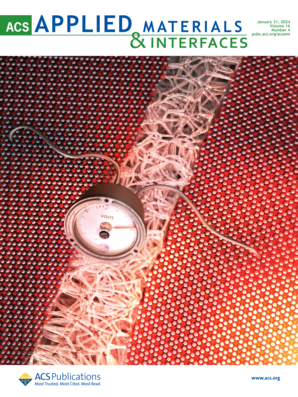Dynamic Flow-Assisted Nanoarchitectonics
IF 8.3
2区 材料科学
Q1 MATERIALS SCIENCE, MULTIDISCIPLINARY
引用次数: 0
Abstract
The solution to societal problems such as energy, environmental, and biomedical issues lies in the development of functional material systems with the capacity to address these problems. In the course of human development, we are entering a new era in which nanostructure control is considered in the major development of functional materials. The new concept of nanoarchitectonics is particularly significant in this regard, as it comprehensively promotes further development of nanotechnology and its fusion with materials chemistry. The integration of nanoscale phenomena and macroscopic actions is imperative for practical production of functional materials with nanoscale structural precision. This review focuses on dynamic flow-assisted nanoarchitectonics, wherein we explore the organization and control of functional structures by external mechanical stimuli, predominantly fluid flow. The review then proceeds to select some examples and divide them into categories for the purpose of discussion: structural organization by (i) natural flow, (ii) flow or stress created with artificial equipment or devices (forced flow), and (iii) flow at a specific field, namely interfaces, that is, layer-by-layer (LbL) assembly and the LB method. The final perspective section discusses the future research directions and requirements for dynamic flow-assisted nanoarchitectonics. The meaningful and effective use of nanotechnology and nanoarchitectonics in materials science is set to be a major area of focus in the future, and dynamic flow-assisted nanoarchitectonics is poised to play a significant role in achieving this objective.

动态流动辅助纳米建筑学
能源、环境和生物医学等社会问题的解决方案在于开发具有解决这些问题能力的功能材料系统。在人类发展的进程中,我们正在进入一个将纳米结构控制作为功能材料主要发展方向的新时代。纳米建筑学的新概念在这方面尤为重要,因为它全面推动了纳米技术的进一步发展及其与材料化学的融合。纳米尺度现象和宏观作用的整合是实际生产具有纳米级结构精度的功能材料的必要条件。这篇综述的重点是动态流动辅助纳米建筑学,其中我们探索通过外部机械刺激,主要是流体流动来组织和控制功能结构。然后,本文继续选择一些例子,并将其分为三类,以便讨论:通过(i)自然流动进行结构组织,(ii)人工设备或装置产生的流动或应力(强制流动),以及(iii)特定领域的流动,即界面,即逐层(LbL)组装和LB方法。最后展望部分讨论了动态流动辅助纳米结构的未来研究方向和要求。纳米技术和纳米建筑学在材料科学中有意义和有效的应用将是未来的一个主要关注领域,而动态流动辅助纳米建筑学将在实现这一目标方面发挥重要作用。
本文章由计算机程序翻译,如有差异,请以英文原文为准。
求助全文
约1分钟内获得全文
求助全文
来源期刊

ACS Applied Materials & Interfaces
工程技术-材料科学:综合
CiteScore
16.00
自引率
6.30%
发文量
4978
审稿时长
1.8 months
期刊介绍:
ACS Applied Materials & Interfaces is a leading interdisciplinary journal that brings together chemists, engineers, physicists, and biologists to explore the development and utilization of newly-discovered materials and interfacial processes for specific applications. Our journal has experienced remarkable growth since its establishment in 2009, both in terms of the number of articles published and the impact of the research showcased. We are proud to foster a truly global community, with the majority of published articles originating from outside the United States, reflecting the rapid growth of applied research worldwide.
 求助内容:
求助内容: 应助结果提醒方式:
应助结果提醒方式:


